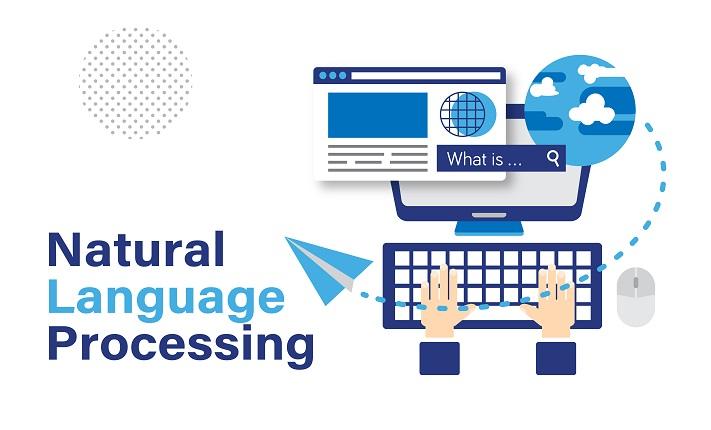In today’s digital age, Best Natural Language Processing (NLP) has emerged as a powerful tool for understanding and generating human language through machines. It’s widely used in applications ranging from chatbots and sentiment analysis to language translation and automated content generation. As Natural Language Processing continues to evolve, understanding the core NLP algorithms is essential for developers and businesses alike.
In this blog post, we’ll explore the best Natural Language Processing algorithms and explain their functions, use cases, and how they contribute to the success of natural language processing projects.
What is Natural Language Processing?
Before diving into the best Natural Language Processing algorithms, let’s first address the question: what is natural language processing?
Natural Language Processing (NLP) is a field of artificial intelligence (AI) focused on enabling machines to understand, interpret, and generate human language. By analyzing large volumes of text data, NLP allows computers to perform tasks such as text classification, translation, sentiment analysis, and even dialogue generation.
The importance of Natural Language Processing in artificial intelligence cannot be overstated. It helps bridge the gap between human communication and machine understanding, enabling more natural interactions with technology.
Best Natural Language Processing Algorithms
Let’s dive into some of the best Natural Language Processing algorithms that are commonly used to implement various NLP tasks.
1. Naive Bayes Classifier
The Naive Bayes classifier is one of the most popular and widely used algorithms in Best Natural Language Processing for text classification tasks. It is based on Bayes’ Theorem and assumes that the presence of a particular feature in a document is independent of the presence of other features. This assumption simplifies the calculations and makes the algorithm highly efficient for tasks like spam detection, sentiment analysis, and document classification.
Key Features:
- Fast and efficient.
- Works well with large datasets.
- Commonly used in natural language processing projects like email filtering and sentiment analysis.
2. Support Vector Machines (SVM)
Support Vector Machines (SVM) are highly effective NLP algorithms for classification tasks, especially when the data is highly dimensional. SVMs find the optimal hyperplane that separates data into different classes. In Natural Language Processing, SVMs are used for text classification, sentiment analysis, and even named entity recognition (NER).
Key Features:
- Effective in high-dimensional spaces.
- Can handle non-linear data with the use of kernel functions.
- Ideal for binary classification tasks, such as sentiment analysis or categorizing documents.
3. Recurrent Neural Networks (RNN)
Recurrent Neural Networks (RNNs) are a class of neural networks that are well-suited for processing sequences of data, which is essential for many NLP tasks like language translation, speech recognition, and text generation. Unlike traditional feedforward neural networks, RNNs have connections that form cycles within the network, allowing them to remember information from previous steps in a sequence.
Key Features:
- Excellent for sequential data and time-series tasks.
- Used for natural language processing projects that involve text generation, sentiment analysis, and machine translation.
- Can be prone to vanishing gradient problems, but LSTM and GRU variants have overcome this limitation.
4. Transformers (BERT, GPT, T5)
Transformers, particularly BERT (Bidirectional Encoder Representations from Transformers), GPT (Generative Pre-trained Transformer), and T5 (Text-to-Text Transfer Transformer), have revolutionized the field of Natural Language Processing. These models are capable of understanding context, generating coherent text, and completing text-based tasks like question answering, translation, summarization, and more.
Key Features:
- BERT is pre-trained on large corpora and fine-tuned for specific tasks, such as text classification or sentiment analysis.
- GPT is designed for generating human-like text, excelling at tasks such as creative writing and automated content generation.
- T5 treats every NLP task as a text-to-text problem, making it highly versatile.
Transformers have set new performance benchmarks and are increasingly used in natural language processing projects requiring high-level language understanding.
5. Word2Vec
Word2Vec is a popular NLP algorithm that transforms words into dense vector representations, capturing the semantic meaning of words in a numerical format. By training a neural network to predict words within a given context, Word2Vec learns word associations and allows algorithms to understand word relationships.
Key Features:
- Helps convert words into vector space, making it easier for machines to process language.
- Supports natural language processing projects like document similarity, word associations, and sentiment analysis.
6. Latent Dirichlet Allocation (LDA)
Latent Dirichlet Allocation (LDA) is a topic modeling algorithm used in Natural Language Processing to discover hidden topics in large text corpora. LDA assumes that each document is a mixture of topics, and it aims to determine the underlying topic distribution within a document.
Key Features:
- Widely used for discovering topics in large document collections.
- Helps in document clustering, content recommendation, and summarization.
- Ideal for natural language processing projects requiring content discovery and categorization.
7. Named Entity Recognition (NER) Algorithms
Named Entity Recognition (NER) is a crucial NLP task that identifies and classifies entities in text, such as names of people, locations, organizations, dates, and more. NER algorithms, such as those based on conditional random fields (CRF) or deep learning models like transformers, are essential for tasks like information extraction, document categorization, and question answering.
Key Features:
- Used to identify entities in unstructured data.
- Critical for natural language processing in artificial intelligence applications like content extraction, search engines, and chatbots.
Why Choose the Best Natural Language Processing Service?
With so many powerful NLP algorithms available, it can be challenging to determine the right approach for your project. That’s where the best natural language processing service can help. These services offer tailored solutions to meet the specific needs of your business, from sentiment analysis and text classification to chatbot development and real-time translation.
By leveraging expert Natural Language Processing services, you can accelerate your natural language processing projects and gain valuable insights from unstructured text data. Whether you’re looking to automate customer service or analyze large text datasets, professional NLP services can provide the expertise and tools you need to succeed.
Conclusion
Understanding NLP algorithms is crucial for anyone looking to work with Natural Language Processing technologies. From Naive Bayes to advanced transformers like BERT and GPT, each algorithm offers unique advantages for different tasks. By choosing the right NLP approach, developers can build highly effective applications that process and understand human language with ease.
If you’re looking for expert assistance in applying Natural Language Processing algorithms, consider exploring a best natural language processing service. These services can help you implement tailored NLP solutions that enhance your business operations and provide a competitive edge in the ever-evolving world of AI and machine learning.
Stay updated with our latest news and offerings! Follow us on Facebook, Instagram, and LinkedIn.


